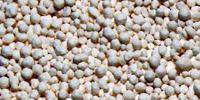According to materials chemists at the University of Massachusetts Amherst led by Trisha Andrew, farmers and fruit growers are reporting that climate change is causing higher ozone concentrations on the soil surface in their fields and orchards. This exposure can harm plants permanently, lower crop yields, and endanger the availability of food.
Co-first authors Jae Joon Kim and Ruolan Fan demonstrate in Science Advances that growers can precisely identify and measure such ozone damage, even at low exposure levels, using the Andrew lab’s technique of vapor-depositing conducting polymer “tattoos” on plant leaves.
Their resilient polymer tattoos placed on the leaves allow for “frequent and long-term monitoring of cellular ozone damage in economically important crops such as grapes and apples,” Andrew says.
They write, “We selected grapes (Vitis vinifera L.) as our model plant because the fruit yield and fruit quality of grapevines decrease significantly upon exposure to ground-level ozone, leading to significant economic losses.”
For instance, the combination of the sun and fertilizer nitrates might result in the formation of ground-level ozone.
The chemical team received advice from UMass Amherst viniculturist Elsa Petit, who believes the sensor tattoo might be particularly helpful to the grape sector.
“With climate change, ozone will increase and this new sensor might be extremely useful to help farmers act before the damage is recognizable by eye,” she says.
Early detection and treatment of the soil surface with charcoal or zeolite powders can reduce ground-level ozone.
Ours acts like a temporary tattoo on a human. It doesn’t wash away and the polymer’s electrical properties don’t degrade, even over a long time. We have some tattooed plants in a greenhouse on campus and a year later they are still growing fine, putting out roots and leaves as normal.
Trisha Andrew
According to Andrew, her lab received funding from the National Science Foundation and modified the electrode vapor-deposition technique they had created in the past to coat fabrics for medical sensing devices for a new application on living plants.
Since the conducting polymer sheet, poly(3,4-ethylenedioxytiophene), PEDOT, is only 1 millimeter thick, it does not harm leaves while still allowing sunlight to pass through. Since their creation in the 1970s, non-metal, carbon-based polymers that function as conducting electrodes have been used more and more in soft material design, the author continues.
“Ours acts like a temporary tattoo on a human,” Andrew says. “It doesn’t wash away and the polymer’s electrical properties don’t degrade, even over a long time. We have some tattooed plants in a greenhouse on campus and a year later they are still growing fine, putting out roots and leaves as normal.”
She and her coworkers utilize a hand-held impedance spectrometer modified for use in human medicine to check for early ozone damage. A read-out displays the electrical resistance vs. frequency relationship when it comes into contact with the electrode tattoo. Ozone-induced oxidative damage is one of the many factors that affect this voltage value.
Andrew says, “You get a wave-form image; a software program fits the wave so we can extract certain tissue parameters. We can recognize patterns for different kinds of damage. It’s consistent and remarkably accurate. If you use it on the same plant over a year, as long as the plant is healthy the signal doesn’t really change over that time.”
“The problem scientifically is that visual ozone damage looks exactly the same as if you watered the plant too little or it got too much sun. This project became intellectually interesting to us when we looked at the ozone signature of our read-outs and it was very different from drought or UV damage. Ozone produces a unique change in the high-frequency electrical impedance and phase signals of leaves.”
The researchers believe that farmers and fruit producers may make use of their creation by planting a few “reporter plants” amid their crops to periodically check the ozone levels in the soil.
“It gives you a picture of what is going on in your soil,” Andrew suggests. “You can be alerted if the fertilizer level is wrong, for example. This can happen, especially with food crops that need a lot of sun and fertilizer to produce, like melons, grapes, and orchard fruits. Some plants are very sensitive to it.”
















